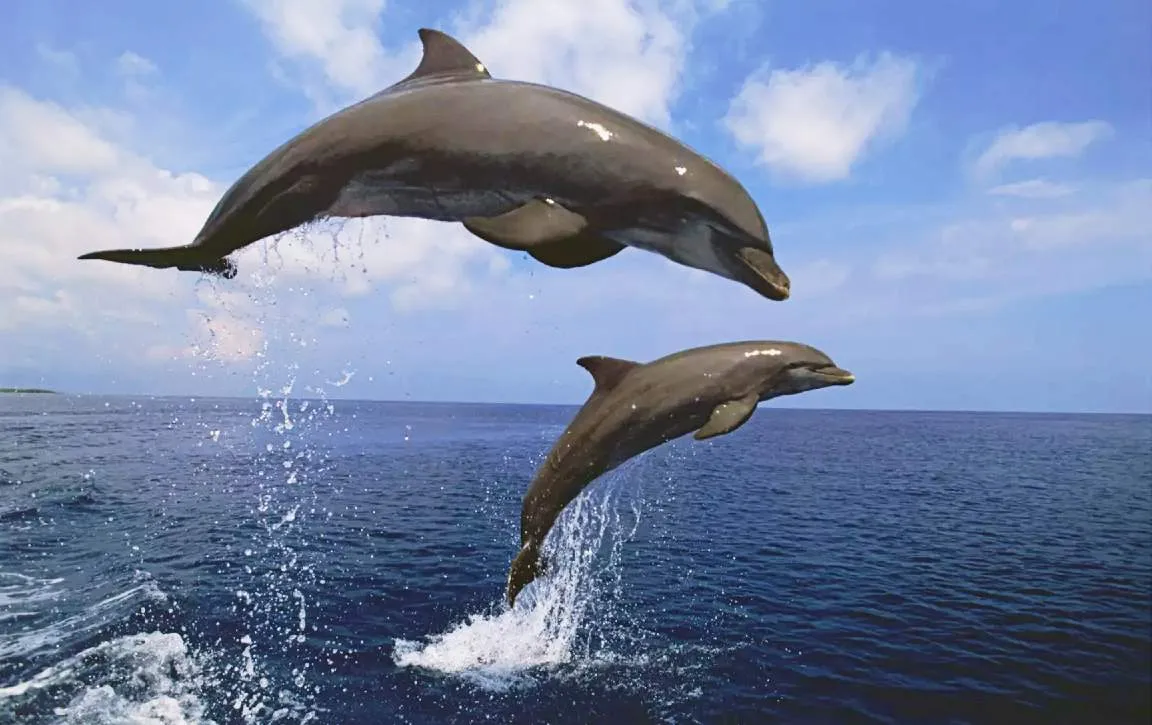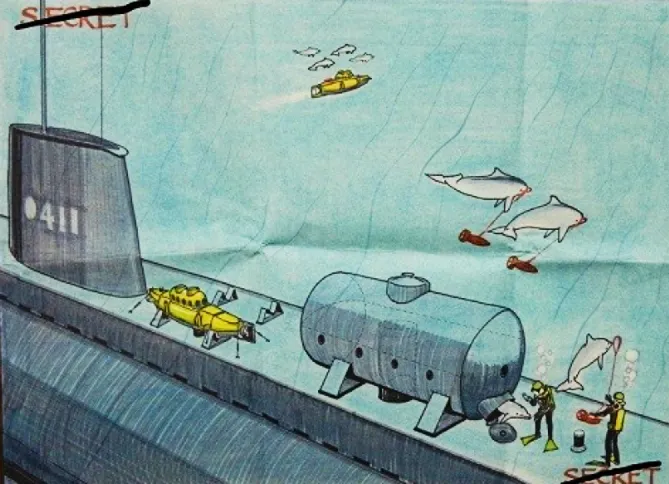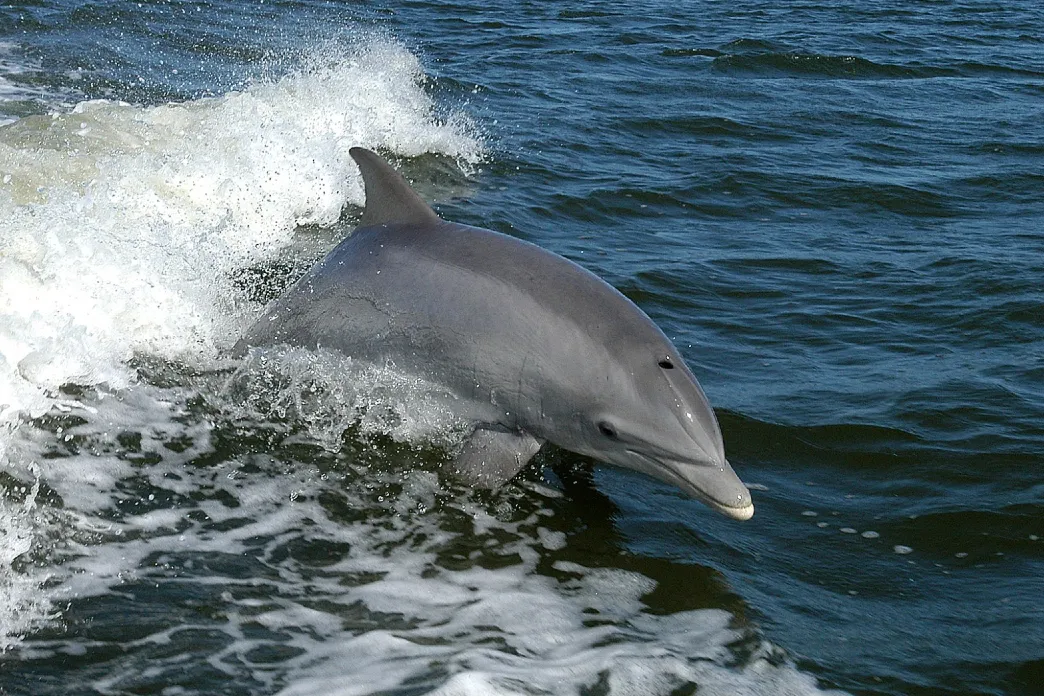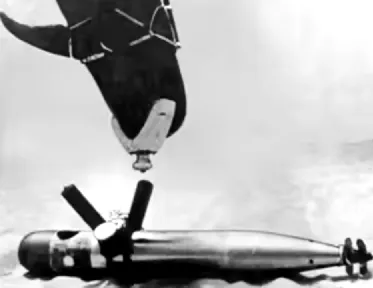Spy Dolphins: The Secret CIA Plan to Use Mammals to Sink Ships
Undercover dolphins have been trained to detect incoming submarines, divers, and even plant bombs but are they now fighting wars?
Satellite imagery indicates Moscow deployed marine mammals to help protect a Black Sea naval base at the start of the 2022 Ukraine war. Naval analyst H.I. Sutton studied satellite photos which revealed an underwater pen moved near the base, possibly to stop Ukrainian special operations forces from infiltrating the harbor underwater to sabotage ships.
Russia is not the only country apparently relying on marine mammals. In 2003, the US deployed dolphins to probe the seafloor for mines near a key Iraqi port. US dolphin operations date back to at least the Cold War and a secret 1960s CIA project known as Project OXYGAS which envisioned dolphin saboteurs trained to attach explosive devices to enemy ships.

Project OXYGAS
CIA Project OXYGAS used at least two captured wild bottlenose dolphins (Tursiops truncatus), according to an Agency report declassified in 2019, which reads: "The OXYGAS concept and the modest investment were considered more than justifiable providing feasibility could be demonstrated to deliver a simulated weapons package over an open sea distance to a propellor of a moored PT [patrol torpedo] boat.”
The CIA had big plans for the bottlenose dolphin program back in 1964, surmising that OXYGAS could even be rolled out to ‘spillover’ areas of interest including harbor and coastal reconnaissance through photographic means and the placement of rocket detection units. The dolphins might also be used to place sonar, acoustic, and seismic buoys and sensors.
"The brand new social experience where you activate your gaming skills as you train like a spy."
- TimeOut
Take on thrilling, high-energy espionage challenges across different game zones.


Dolphin spies and saboteurs
The CIA envisioned the dolphins working alongside US experts rather than in place of them. An Agency graphic shows the OXYGAS dolphins swimming away from a submarine or underwater container, using harnesses on their snouts to tow bombs.
However far-fetched it may sound, dolphins have been found to share a number of similar personality traits to humans and primates such as intelligence, curiosity, and sociability, despite evolving in a different environment from primates.
“Dolphins, like many primates, have brains that are considerably larger than what their bodies require for basic bodily functions; this excess of brain matter essentially powers their ability to be intelligent, and intelligent species are often very curious," according to Dr. Blake Morton who lead a 2021 study of 134 bottlenose dolphins.
Flipper spy dolphins
The 1964 CIA dolphin project coincided with the debut of Flipper, an American TV show about a crime-fighting bottlenose dolphin that patrolled a Florida water park. The CIA’s real-life dolphins weren’t expected to fight crime, but they would be trained to fight US enemies underwater at a much cheaper price than an existing ‘swimmer’ program costing $5m a year, according to the memo.
"The dolphin cannot be expected to completely replace the man in the water,” according to a two-page memo, signed by the Chief, Maritime Branch Special Operations Division. “The dolphin should, however, be expected to obviate the need for a major portion of our man-effort with a resultant considerable short and long-range dollar saving and many other advantages.”
While the CIA plans don’t appear to have come to fruition, the US Navy has trained bottlenose dolphins to find explosive mines underwater.

Dolphin Echolocation
While the dolphins can’t disarm the mines, they are able to locate suspicious metal objects from a distance so humans can avoid or disarm them. Eager to accept fish as a reward, the dolphins spot the metal object and then swim to a waiting boat to poke a signifier, such as a ball, with their nose. The dolphins then receive a transponder to leave near the suspected mine.

Dolphins have the ability to use sound to detect the size and shape of objects, even from hundreds of yards away. A dolphin's ‘echolocation’ - their natural sonar - can even determine the difference between a golf ball and a ping-pong ball based on density.
Dolphins complete risky missions for a couple of kilograms of halibut
Nuclear dolphins?
Could the CIA have been considering whether dolphins could carry nuclear weapons in the future? In February 1965, the CIA reported that "two dolphins are now routinely delivering simulated..." The rest of the paragraph is redacted so we will never know with certainty.
SPYSCAPE+

Join now to get True Spies episodes early and ad-free every week, plus subscriber-only Debriefs and Q&As to bring you closer to your favorite spies and stories from the show. You’ll also get our exclusive series The Razumov Files and The Great James Bond Car Robbery!


Gadgets & Gifts
Explore a world of secrets together. Navigate through interactive exhibits and missions to discover your spy roles.
Your Spy Skills
We all have valuable spy skills - your mission is to discover yours. See if you have what it takes to be a secret agent, with our authentic spy skills evaluation* developed by a former Head of Training at British Intelligence. It's FREE so share & compare with friends now!
* Find more information about the scientific methods behind the evaluation here.


Stay Connected
Follow us for the latest
TIKTOK
INSTAGRAM
X
FACEBOOK
YOUTUBE